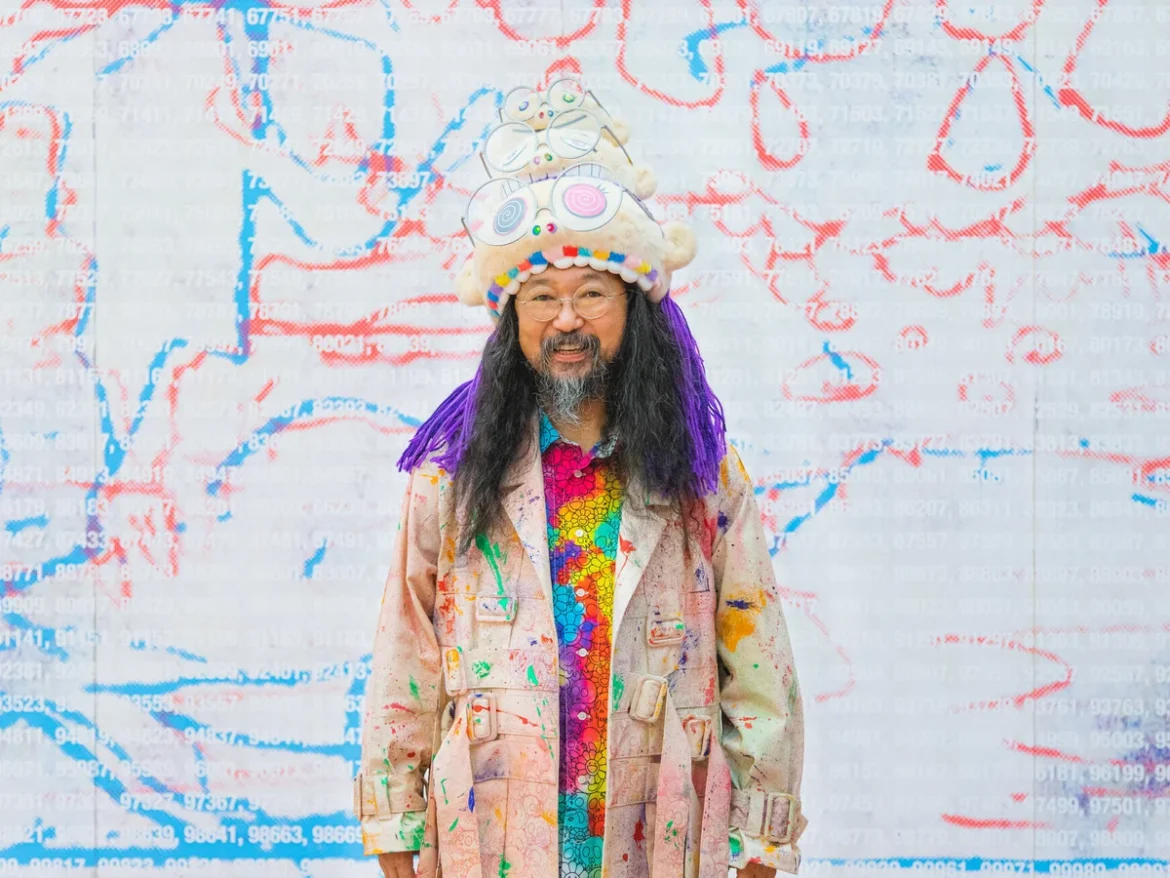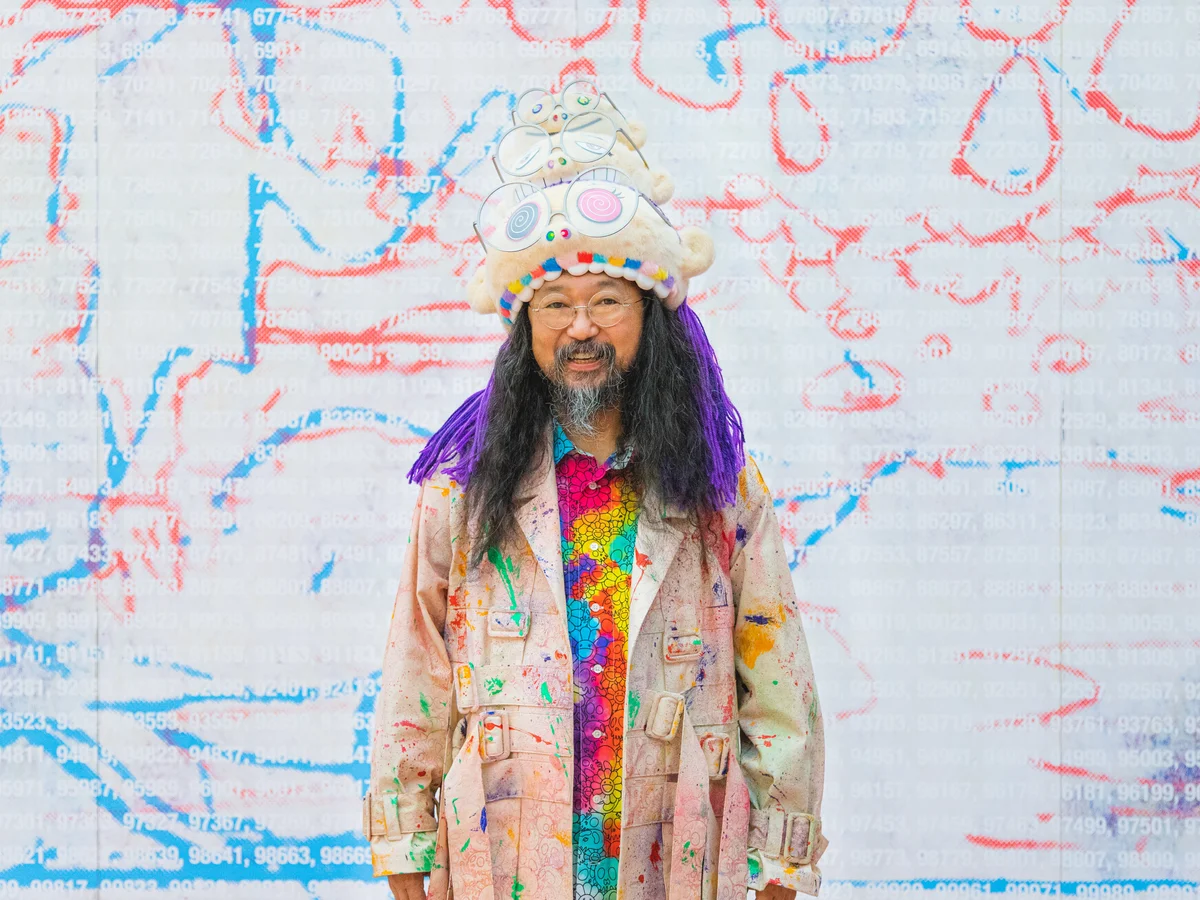It’s Kyoto, but not as you know it. Forget cherry blossom and golden temples: study one of Takashi Murakami’s vast new paintings and you’ll notice shimmering clouds laid over the embossed outlines of cartoon skulls. It’s a reference, he says, to the city’s ancient Toribeno burial ground – and a key motif for the artist in his evocation of Japan’s postwar ghosts.
“I really wanted to depict a version of Kyoto that is not beautiful or pleasing to tourists,” says Murakami via a translator from his vast studio-cum-factory complex outside Tokyo. “I wanted to show that Kyoto’s arts and culture were nurtured within the context of really gruesome historical and political conflicts.”
Why did the 62-year-old want to explore his country’s brutal history? Part of the reason lies in his most recent obsession: the 10-part TV series Shōgun. The rapturously received tale of warring factions and European meddling in 17th-century feudal Japan was a major influence for Japanese Art History à la Takashi Murakami, his new show at London’s Gagosian gallery.
“[Shōgun was] done from a viewpoint that was very refreshing for the Japanese,” says Murakami. “For example, with the hara-kiri scenes, they really connected with the political and spiritual motivations. The fact they all have their own poem before they kill themselves – a contemporary Japanese director would not put that in. So I realised there are these old themes and stories that can be approached from a really fresh angle.”
Murakami has been trying to find fresh angles on old themes for the last three decades. Born in Tokyo in 1962, he switched from studying animation to classical Japanese painting while at Tokyo University of the Arts, before a fellowship in 1994 led him to MoMA PS1’s year-long international studio program. While in New York, Murakami marvelled at the monumentalism of Anselm Kiefer and the sleek simulacrums of Jeff Koons. Seeking to adopt the rules of the western art market, he launched his own pioneering investigation of Japanese art history.
With his Superflat manifesto, published in 2000, Murakami denounced hierarchical constructs of “high” and “low” art as a western import, steamrolling conceptual barriers between revered historical masterpieces and contemporary anime by celebrating their shared aesthetic genealogy.
It brought the artist staggering global success. His cover art for Kanye West’s 2007 album, Graduation, sparked a series of musical collaborations that include Drake, A$AP Rocky and, more recently, Billie Eilish and the late rapper Juice Wrld. Murakami’s mastery of branding obliterated the distinction between fine art and consumer goods, while his embrace of new technologies – not to mention his wacky taste in headgear – ensured continued popularity among younger, online audiences.
In 2002, his pictures first covered Louis Vuitton handbags in a wildly successful collaboration with the French luxury brand that has just been extended – he also works with Supreme, Uniqlo and Crocs. And yet, as one of Japan’s most recognised contemporary artists, Murakami receives most attention abroad. His major solo exhibition at Kyoto’s Kyocera Museum of Art earlier this year was his first in Japan for nearly a decade.
Many of the works at Gagosian have travelled directly from Kyocera, a show in which Murakami provided his own take on some of Japan’s most cherished Edo masterpieces. Chief among them is a designated national treasure: Rakuchū-Rakugai-zu Byōbu (Scenes In and Around Kyoto, c1615), an exquisitely detailed aerial view of everyday life in newly urbanised Kyoto, originally painted across two, six-panel folding screens by 17th-century painter, Iwasa Matabei.


